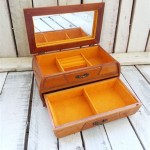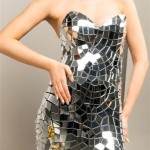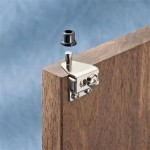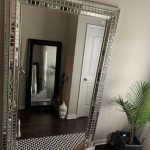Large French Mirrors: A Reflection of Elegance and History
Large French mirrors, coveted for their timeless elegance and historical significance, remain a popular choice for interior design. These pieces, often imbued with intricate detailing and craftsmanship, can transform a space, adding light, depth, and a touch of classic French style.
The history of French mirrors is intertwined with the rise of French glassmaking and the evolution of interior design. From the opulent designs of the Louis XIV period to the more refined aesthetics of later eras, French mirrors have consistently reflected the prevailing artistic trends. The 17th and 18th centuries saw a surge in popularity for large mirrors, particularly within the aristocratic classes. These mirrors were not merely functional objects; they were symbols of wealth, status, and refined taste.
The manufacturing process of these mirrors was a testament to the skill of French artisans. Early French mirrors utilized mercury glass, a technique involving the application of a tin-mercury amalgam to the back of a glass sheet. This process, while effective in creating a reflective surface, was also hazardous due to the toxicity of mercury. Later, advancements in glassmaking led to the development of silvered glass, a safer and more efficient method that remains the standard today.
The frames of large French mirrors are often as noteworthy as the mirrors themselves. Materials like wood, gilded gesso, and resin were commonly used, and skilled carvers embellished them with intricate designs. Popular motifs included acanthus leaves, scrolls, floral garlands, and classical figures. The frames were often finished with gold leaf, paint, or a combination of techniques, further enhancing their decorative appeal.
Several distinct styles characterize large French mirrors. The Louis XIV style, known for its grandeur and opulence, features heavily ornamented frames with bold, symmetrical designs. Louis XV mirrors, in contrast, exhibit a more delicate and asymmetrical aesthetic, incorporating rococo elements such as shells, scrolls, and floral motifs. The neoclassical style, emerging later, embraced a return to classical forms and symmetry, often featuring simpler, more linear designs.
The size of these mirrors is a key defining characteristic. Large French mirrors were designed to make a statement, often serving as focal points in grand rooms and hallways. Their substantial dimensions not only added a sense of grandeur but also served a practical purpose by reflecting light and creating an illusion of spaciousness. This was particularly important in pre-electric lighting eras, where mirrors played a crucial role in illuminating interiors.
Incorporating a large French mirror into a modern interior requires careful consideration of scale and style. These mirrors can complement various design aesthetics, from traditional and classical to more contemporary settings. Positioning a large French mirror opposite a window can maximize natural light, brightening the room and creating a sense of depth. They can also serve as striking focal points above a fireplace or console table.
When selecting a large French mirror, attention to detail is essential. Examining the quality of the frame, the clarity of the glass, and the overall craftsmanship is crucial. Antique mirrors often bear signs of age and wear, which can add to their character and authenticity. Reproductions, while offering a more accessible option, should be evaluated for their faithfulness to original designs and construction techniques.
Maintaining a large French mirror involves regular cleaning and care. Dusting the frame with a soft cloth and using a gentle glass cleaner on the mirror surface can help preserve its beauty. Avoiding harsh chemicals and abrasive materials is essential to prevent damage to the frame and the delicate silvering. For antique mirrors, consulting a professional conservator may be advisable for more specialized cleaning and restoration.
The enduring appeal of large French mirrors lies in their ability to seamlessly blend artistry and functionality. They serve not only as reflective surfaces but also as decorative elements that enhance the aesthetic appeal of a space. Whether an antique or a reproduction, a large French mirror can add a touch of timeless elegance and a whisper of history to any interior.
The versatility of these mirrors allows them to be incorporated into diverse design schemes. They can be juxtaposed with modern furniture to create an eclectic look or used to enhance the traditional ambiance of a period room. The reflective qualities of a large French mirror can also be strategically employed to visually expand smaller spaces, creating an illusion of greater depth and dimension.
The market for large French mirrors offers a wide range of options, from antique pieces discovered in antique shops and auction houses to newer reproductions available from furniture retailers and online marketplaces. Careful research and consideration of personal preferences are essential when selecting a mirror that aligns with individual style and budget.

Large 19th Century Decorative French Mirror Brocante At No 45

French Mirror Large 88h X 43w Baroque Israel

Antique French Mirror With Wide Ropetwist Frame In Mirrors

Large 19th Century Antique French Ornate Mirror Vintage Boathouse

Large Antique French Mirror 234064 Ingantiques Co

Antique Long French Mirror Centuria

Large Antique French Mirror 337107 Ingantiques Co

Large Antique French Mirror 1860 For At Pamono

Large 19th Century French Overmantle Mirror Vintage Boathouse

Large Antique Gold French Framed Decorative Rococo Ornate Opera Wall Mirror Choice Of Size Premium Quality Free P








